New Record: Driving Across the US in Less Than 29 Hours
Three men, a souped-up Mercedes, 2,813 miles of American roadway, a bedpan, and a dream.
Ed Bolian, and his team, obliterated a cross-country driving record this month, racing from New York to LA in a heart-pounding 28 hours 50 minutes.
That's 11 hours faster than Google maps says it should take, and nearly 3 hours faster than the previous record set in 2006 of 31 hours and 4 minutes.
"Honestly, I was so shocked at how much we had beat our target and previous record," Bolian, a 27-year-old Lamborghini dealer from Atlanta told ABCNews.com.
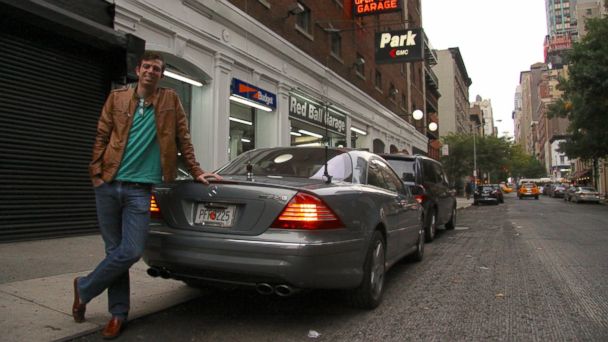
Ed Bolian, 27, at the Red Ball garage in New York City, from which he left on Oct. 19 for a record-breaking cross country drive.
"It was just unbelievable. It was cathartic and amazing. But mostly, I was just shocked," he said upon arriving at LA's iconic Portofino Hotel, the historic end of cross country speed attempts since the 1970s, when Brock Yates created the "Cannonball Baker Sea-To-Shining Sea Memorial Trophy Dash," better known as the Cannonball Run.
For Bolian, the drive was ten years in the making the and fulfillment of a teenage dream, after meeting Yates, the iconic autoracer and journalist.
But planning, he said, began in 2009 when he first set his mind to find the right car and outfitting it with enough of the latest technology to outsmart cops, outrun traffic and outlast any changes in weather.
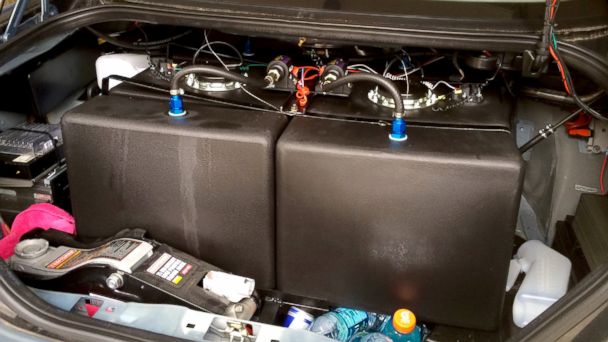
Bolian outfitted the Mercedes with two extra fuel tanks.
Starting with a Mercedes CL 55, chosen less for its top speed than a suspension sturdy enough to carry extra fuel, Bolian added two 22-gallon auxiliary fuel drums to the car's existing 23-gallon tank. Those 67 gallons of gas are heavy, weighing nearly 400 pounds.
In the cockpit of the car is a veritable electronics store featuring scores of devices, many of which aided the team in what Bolian called "countermeasures."
Among those countermeasures were a CB radio, radar detector, police scanner, laser jammer and a switch that could deactivate the car's lights.

The car's cockpit.
On top of that, the car was outfitted with two GPS devices and a mobile Internet connection that allowed the team to consult traffic and weather apps and websites.
There was also that bedpan, insurance against any unnecessary stops.
For all of Bolian's money, effort and planning, in the weeks leading up to the run, he realized he was missing two critical items - a co-driver and a navigator.
"To be honest," Bolian confessed, "much of the drama happened before trip. I knew I needed to convince someone to do something dangerous and illegal. I didn't secure a co-driver until about six weeks before, or a support passenger until 18 hours before we set out."
Bolian reached out to Dave Black, a friend and former customer from the Lamborghini dealership, to share duties for the grueling drive. He reached out to friends across Facebook looking for someone willing ride in the back, spotting for police and calculating fuel usage, before hearing from Dan Huang.
"When we got to New York and I explained all of the procedures and exactly what it was going to take, I thought for sure these guys were going to get on a plane and head back to Atlanta," Bolian said. It didn't help that during a test run of the car, the team was pulled over for driving the wrong way down a one-way street.
The first person to set a speed record for driving cross country was Edwin "Cannonball" Baker in 1933. In the 1970s, Yates and others inaugurated the Cannonball Run in Baker's honor and as a protest against new federal speed limits initiated in the wake of the oil crisis.
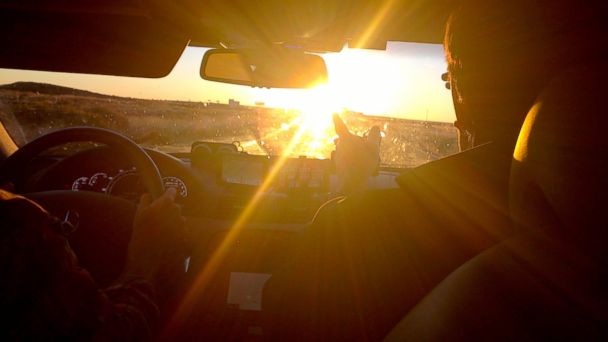
Driving West, into the sunset.
That race was traditionally run from the Red Ball Garage in Manhattan to the Portofino in Redondo Beach, Calif.
"There's no governing body for outlaw street racing. That's the whole idea," Bolian said. "But there is an unwritten rule book and we wanted to mirror as closely as we could that chapter of American automotive history. We wanted to mirror the cannonball start and end point."
The team, buzzing with excitement and adrenaline, pulled off the starting line in New York at 9:56 p.m. on Saturday, Oct. 19.
"Then we sat in traffic for 15 minutes trying to get out of the city," Bolian said.
From there it was a surprisingly smooth ride, at an average speed of 98 mph, whipping through the heartland along a route that "mostly followed I-40."
The car's max speed was 158 mph.
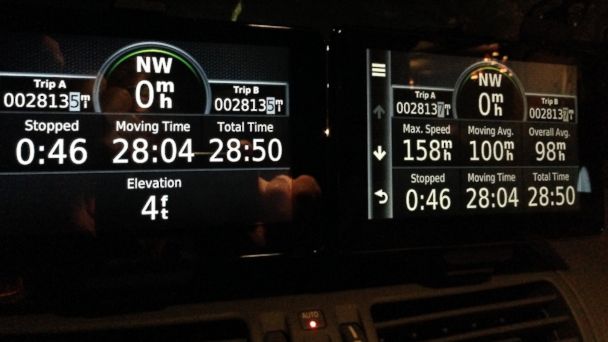
The final readout.
For legal reasons, Bolian is vague about the exact course they took, but an independent GPS company was hired to track the run and confirm the accomplishment.
"We were unfathomably fortunate," he said. "We had no accidents, no traffic, no weather, no major construction. We wanted this to be a benign use of highway. We didn't want to hurt anyone, we didn't want to get hurt and we didn't want to get arrested."
With the exception of one FedEx truck "that tried to merge on top of us, and another truck that tried to block us … we didn't really have any problems," Bolian said.
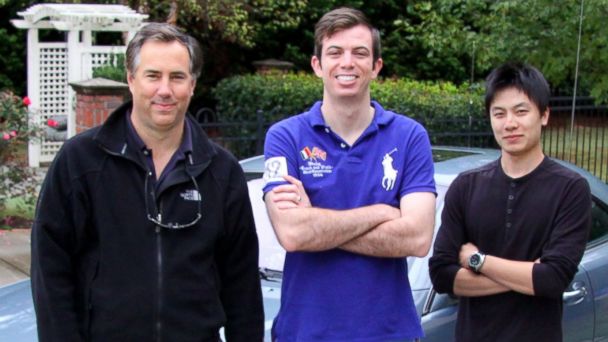
From left: Dave Black, Ed Bolian and Dan Huang
On Sunday, Oct. 20, at 11:46 p.m., Bolian and his team arrived at the Portofino Hotel, 28 hours and 50 minutes after they left the Red Ball Garage in New York.
"I know someone will try to beat the record. And that's the fun. But for now, I'm enjoying it," Bolian said.